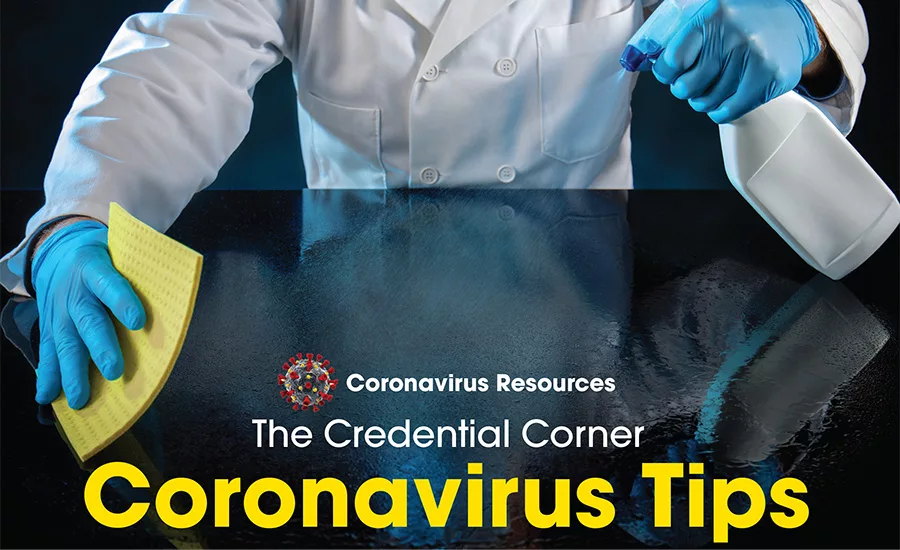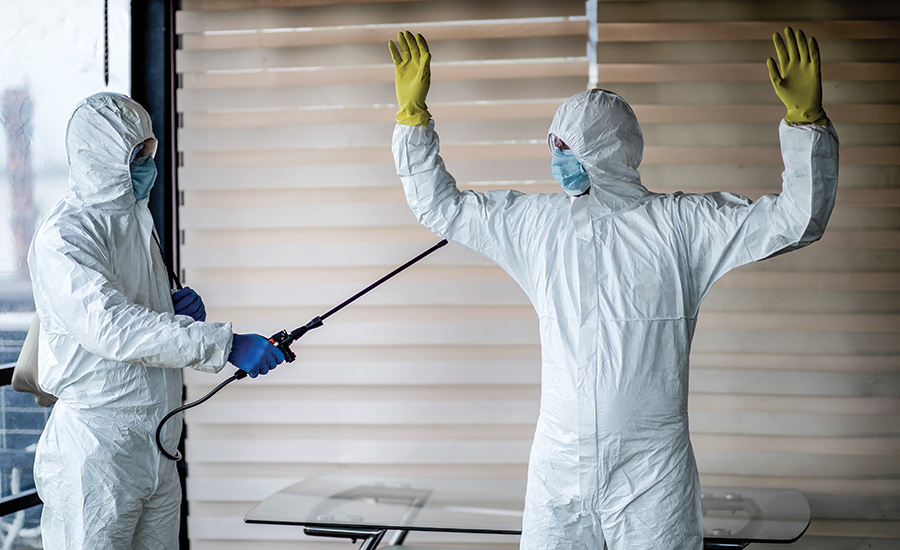The Credential Corner
Coronavirus Tips from a CIH – PPE for the Front-liners

Most of us know not all PPE is created equal. When it comes to the SARS-CoV-2 or Coronavirus, there are many questions about proper PPE. Before that can be answered, the first question that needs to be asked is: what is the task being performed? Are you going to be providing preemptive or proactive cleaning and disinfection services in a low-risk property (ie. no coronavirus positive test or reason to believe a positive tested person has recently been in the property) OR are you providing services for a high-risk property where someone has or likely will test positive for the virus? The answer to these questions might help direct your decision on the level of PPE as a result from performing a hazard/risk assessment.
The CDC has various recommendations when it comes to PPE, especially for health care workers, including items such as N95 respirators (filtering facepiece masks), isolation gowns, gloves, eye protection and hand hygiene practices. In recent days, we have learned there is now a shortage of N95 respirators, so we are starting to see facemasks and even cloth masks being used in the general public.
As it relates to respirators, are N95s proper PPE for the professionals that are on the front-lines of cleaning and disinfecting properties? Professionals that perform property restoration, abatement, disaster response, environmental/hazardous material cleanup, etc. are trained and accustomed to wearing a higher level of PPE, especially when it comes to respirators. Please do not think that using the CDC-recommended N95s, facemasks or cloth masks is sufficient in protecting your workers.
OSHA’s General Duty Clause states that employers are required to provide their workplace free from recognized hazards likely to cause death or serious harm, like the coronavirus. In many cases, providing specific coronavirus disinfection services or treating patients infected with the virus will be considered a higher risk of exposure.
For contractors performing COVID-19 response services, particularly those on high risk properties, consider using an Air Purifying Respirator (APR) such as a half face, full face, or even Powered APR (PAPR) with P100 cartridges. Also consider using acid or VOC cartridges (depending on the type of disinfectant being applied).

With so much COVID-19 information swirling social media, it can be a little confusing as to where to go for proper PPE information (CDC, WHO, OSHA, EPA). To add to the confusion, if you work in California, you will need to also be familiar with Cal/OSHA’s CCR Title 8, Section 5199; Aerosol Transmissible Disease (ATD). This California Regulation is the only ATD in the country and requires worker protection when workers may be exposed to an airborne infectious disease such as coronavirus in facilities such as health care facilities, skilled nursing facilities, medical clinics, correctional facilities, homeless shelter, drug treatment centers, etc.
Regardless of what city, county, state or country you, always make sure to comply with the most relevant and stringent standard or regulation.
Looking for a reprint of this article?
From high-res PDFs to custom plaques, order your copy today!






